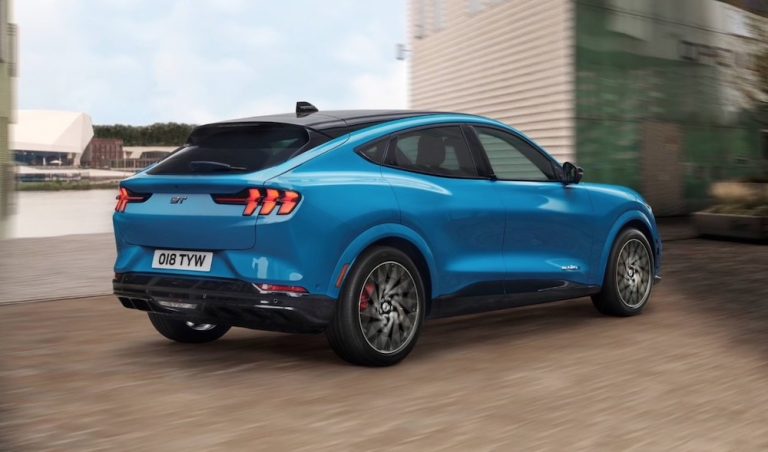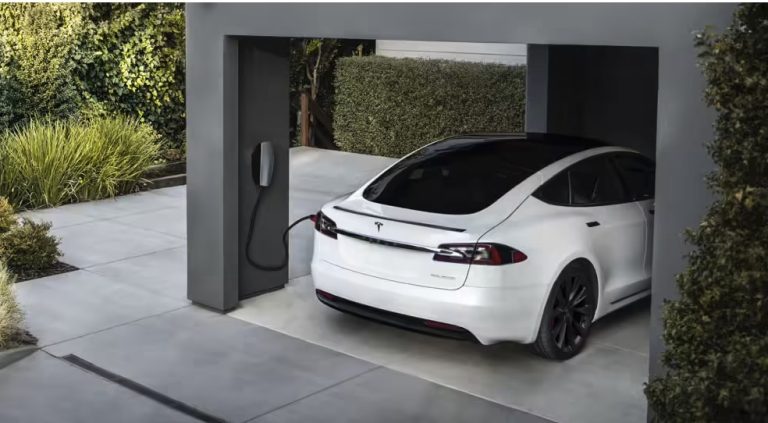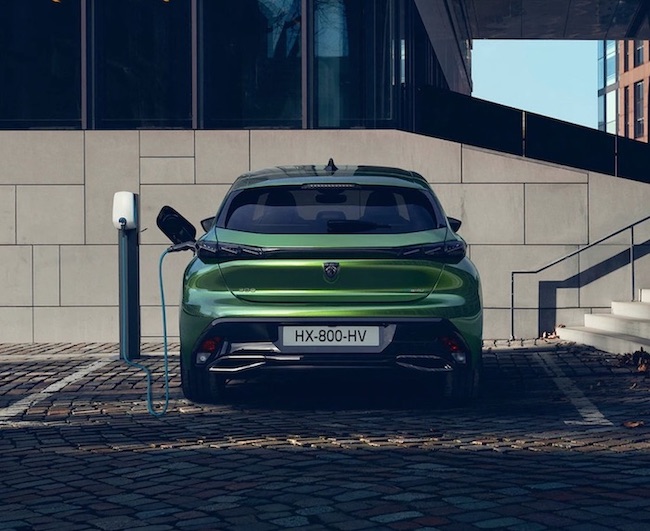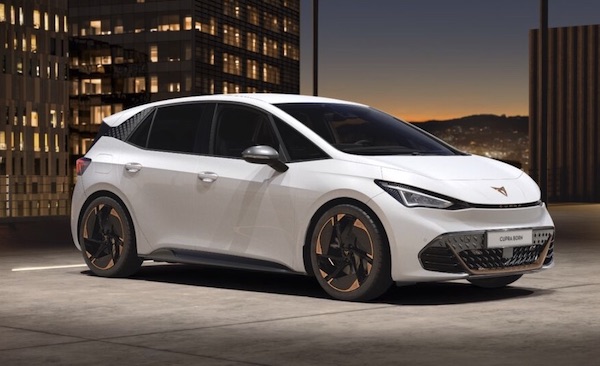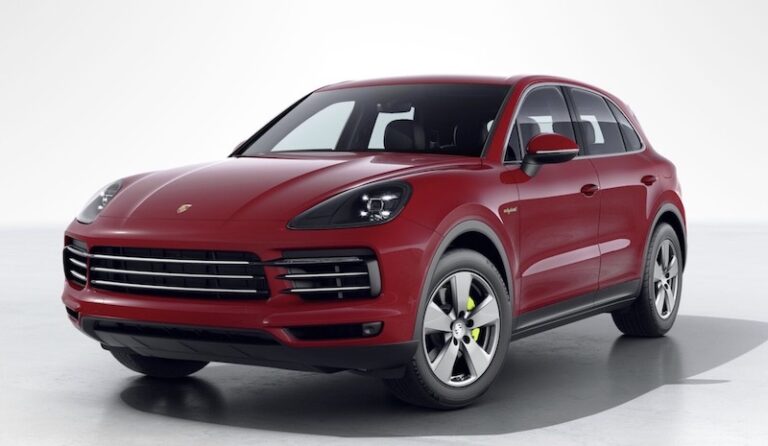Electric Cars: The Basics
For those of you new to zero-emission electric driving, we would recommend a read of the following articles:
Sign up to the e-zoomed Electric Living newsletter
The All-Electric Fiat 600e SUV
Fiat Automobile S.p.A. is a subsidiary the Netherlands based Stellantis N.V., which was formed by the merger of Fiat Chrysler Automobiles (Italian/ American) and Groupe PSA (French). You may not be familiar with these names, but the automotive brands in the portfolio would be well known to most consumers. These include: Maserati, Opel, Peugeot, Jeep, Vauxhall, Alfa Romeo etc.
Fiat continues to remain the largest automotive manufacturer in Italy, but also has manufacturing locations globally, with Brazil as the largest international production site. Fiat Automobiles has been recognised in Europe for the lower emission footprint of its vehicles and has been ranked as the lowest level of CO2 emissions by vehicles sold in Europe. The all-electric Fiat 500 has led the transition for the Italian manufacturer to zero-emission electric driving. The company currently has the following portfolio of electric vehicles (EVs):
- Fiat 500e Hatchback
- Fiat 500e Cabrio
- Fiat 600e SUV
Fiat is neither the first, nor will it be the last automotive manufacturer keen to capitalise on the continued popularity of environmentally-friendly SUVs. The latest electric car from the Italian ‘Dolce Vita’ brand, the compact pure electric 600e SUV (B-Segment) is a bigger and more practical sister of the incumbent 500e all-electric hatchback.
Some may be familiar with the Fiat 600 nameplate, a city family car sold by Fiat between 1955 to 1969. Apart from the name, the Fiat 600 internal combustion engine (ICE) car has very little in common with the 600e electric car. However, the Fiat 600e does have a lot more in common with other electric vehicles (EVs) manufactured on the Stellantis Common Modular Platform (eCMP) platform. The all-electric Jeep Avenger is an example. Both the Avenger and the 600e are manufactured in Poland using the eCMP platform.
For those keen on a Fiat pure electric car, but with more practicality than the 500e, the 600e is certainly worth considering. The Fiat 600e is 4.17 metres in length. In comparison the 500e is 3.6 metres. The 600e offers a 360 L boot space, compared to 185 L for the 500e electric hatchback. The 600e also has 15 L of interior storage and a frunk. Despite the increase in length, the legroom for taller rear seated passengers is limited.
But the enhancement in practicality is not limited to the dimensions of the EVs. Even in terms of battery size and electric range, the 600e electric crossover has much more to offer compared to the 500e. The Fiat 600e incorporates a 54 kWh onboard EV battery with a claimed pure electric range up to 409 km (WLTP).
In comparison, the Fiat 500e has a 42 kWh onboard EV battery with a 320 km e-range. Even adjusting for real-world driving conditions, the all-electric Fiat 600e should be able to achieve over 350 km. Sufficient for both day-to-day shorter commutes and longer distance motorway driving. According to the manufacturer, “it represents the ideal solution for both city lovers and outdoor enthusiasts.” The 54 kWh EV battery weighs 339 kg.
As is now becoming a common approach by electric vehicle (EV) manufacturers, the 600 electric car offers a 11 kW (three-phase) AC onboard charger as standard. Certainly helpful for those countries (like Germany), where homes are powered by three-phase power supply.
However, for countries like Ireland, where homes are powered by single-phase power supply, home charging will be limited to single phase (7 kW). Of course, for those with access to three-phase AC charging at home, work or public charging, the EV can be charged up to 100% in 5 hours and 45 minutes.
We recommend a ‘topping up’ approach to charging an electric car. This way, EV charging times are shorter and this approach is better for the long-term maintenance of the EV battery. Fiat offers 8 years or 160,000 km as the warranty for the EV battery (SOH of 70%).
When not charging at home, electric cars should take advantage of the faster DC charging at public charging destinations. The 600e offers DC charging up to 100 kW DC and the EV can be charged from 20% to 80% in 27 minutes. For those new to DC charging follow this link to learn about the differences between AC charging and DC charging.
The Fiat 600e does have stiff competition in its segment, with a number of compact pure electric SUVs already available. Some of these include, the all-electric BYD Atto 3, the all-electric Smart #1, the all-electric Honda e:Ny1, the all-electric Hyundai Kona Electric, the all-electric Kia Niro EV, and of course the all-electric Jeep Avenger. Having said that, Fiat certainly has a stronger brand recognition in our market, compared to more recent entrants, like the Chinese automotive manufacturer BYD. Brand cachet does matter!
In terms of performance, the front-wheel drive (FWD) Fiat 600e electric SUV can deliver 0-100 km/h in 9.0 seconds, with a top speed up to 150 km/h (max power: 156 PS/ torque: 260 Nm). There are three driving modes. The EV also incorporates one-pedal driving.
The exterior styling of the five-door 600e, though quite similar to the 500e, the e-SUV does have a beefier appearance i.e. more muscular compared to the 500e. The Fiat EV is available in two variants, the Fiat 600e La Prima and the Fiat 600e (RED). The latter variant is targeted towards a younger consumer base, keen on migrating to cleaner modes of transportation.
Certainly the bright exterior colour options will appeal to a younger demographic base. Interestingly, Fiat does not offer the EV in the colour grey and will not be offering this colour on any new models. According to Fiat, grey does not represent Dolce Vita!
The EV has a 10.25″ infotainment screen, along with a 7″ instrument display. Both, Apple CarPlay and Android Auto compatibility is on offer. Other features include: intelligent speed assist, cruise control, traffic sign information, attention assistant, lane keeping assist, blind spot detection, handsfree tailgate and more.
The top-of-the-range, 600e La Prima, offers Drive Assist as standard (Level 2 Assisted Driving). The model has yet to be tested for safety by Euro NCAP. The La Prima variant also incorporates keyless entry and driver’s massage seat as standard.
Company-car drivers can also take advantage of the battery-electric vehicles (BEVs). Bottom-line, electric driving is good for the environment and the wallet!
| PROS | CONS |
|---|---|
| Attractive exterior styling | Limited legroom for taller adults seated on rear seats |
| Decent electric range | DC charging limited to 100 kW DC |
| 11 KW onboard AC charger as standard | Limited exterior colour options |
The All-Electric Fiat 600e SUV (credit: Fiat)
| At A Glance | |
|---|---|
| EV Type: | Battery-Electric Vehicle (BEV) |
| Body Type: | SUV |
| Engine: | Electric |
| Available In Ireland: | No |
| Variants (2 Options) |
|---|
| Fiat 600e Red (from € N/A) |
| Fiat 600e La Prima (from € N/A) |
| EV Battery & Emissions | |
|---|---|
| EV Battery Type: | Lithium-ion |
| EV Battery Capacity: | Available in one battery size: 54 kWh |
| Charging: | 100 kW DC rapid charging (20%-80%: 27 mins). Onboard charger 11 kW AC (0%-100%: 5.45 hrs) |
| EV Cable Type: | Type 2 |
| Tailpipe Emissions: | 0g (CO2/km) |
| EV Battery Warranty: | 8 years or 160,000 km |
| Average Cost Of Residential Charging | |
|---|---|
| Battery net capacity: 16.7 kWh | € 4.00 |
| Battery net capacity: 30.0 kWh | € 7.19 |
| Battery net capacity: 39.2 kWh | € 9.39 |
| Battery net capacity: 45.0 kWh | € 10.78 |
| Battery net capacity: 50.0 kWh | € 11.98 |
| Battery net capacity: 64.0 kWh | € 15.34 |
| Battery net capacity: 71.0 kWh | € 17.01 |
| Battery net capacity: 77.0 kWh | € 18.45 |
| Battery net capacity: 90.0 kWh | € 21.57 |
| Battery net capacity: 100.0 kWh | € 23.97 |
- Note 1: The average cost of residential electricity in Ireland varies depending on the region, supplier and type of energy used. An average for Ireland is 23.97 cents/kWh.
- Note 2: Not all EV manufactures make available the data on net EV battery capacity, and in a number of instances the EV battery capacity advertised, does not state if it is gross or net capacity. In general, usable EV battery capacity is between 85% to 95% of the gross available capacity.
| Charging Times (Overview) | |
|---|---|
| Slow charging AC (3 kW – 3.6 kW): | 6 – 12 hours (dependent on size of EV battery & SOC) |
| Fast charging AC (7 kW – 22 kW): | 3 – 8 hours (dependent on size of EV battery & SoC) |
| Rapid charging AC (43 kW): | 0-80%: 20 mins to 60 mins (dependent on size of EV battery & SoC) |
| Rapid charging DC (50 kW+): | 0-80%: 20 mins to 60 mins (dependent on size of EV battery & SoC) |
| Ultra rapid charging DC (150 kW+): | 0-80% : 20 mins to 40 mins (dependent on size of EV battery & SoC) |
| Tesla Supercharger (120 kW – 250 kW): | 0-80%: up to 25 mins (dependent on size of EV battery & SoC) |
- Note 1: SoC: state of charge
| Dimensions | |
|---|---|
| Height (mm): | 1523 |
| Width (mm): | 1781 |
| Length (mm): | 4171 |
| Wheelbase (mm): | 2562 |
| Turning Circle (m): | 10.5 |
| Boot Space (L): | 360 |
| Fiat 600e | |
|---|---|
| EV Battery Capacity: | 54 kWh |
| Pure Electric Range (WLTP): | 409 km |
| Electric Consumption (kWh/100km): | 15.1 – 15.2 |
| Charging: | 100 kW DC rapid charging (20%-80%: 27 mins). Onboard charger 11 kW AC (0%-100%: 5.45 hrs) |
| Top Speed: | 150 km/h |
| 0-100 km/h: | 9.0 seconds |
| Drive: | Front-wheel drive (FWD) |
| Electric Motor (kW): | 115 |
| Max Power (PS): | 156 |
| Torque (Nm): | 260 |
| Transmission: | Automatic |
| Seats: | 5 |
| Doors: | 5 |
| Kerb Weight (kg): | 1,520 |
| Colours: | 7 |
| NCAP Safety Rating: | N/A |
Solar And EV Charging: An Overview
The benefits of renewable energy, in particular, solar and wind energy, is already well established in Ireland and in other parts of the world. With the increase in sales of electric vehicles (EVs) over the past three years, the advantages of using clean and renewable energy has been further enhanced.
Firstly, on-site renewable energy systems can be used for powering, both, business premises and homes. For on-site generation, we have witnessed a significant increase in distributed clean energy generating plants i.e. many commercial buildings and residential buildings have become generators i.e. generating electricity on-site! Solar roof projects have been popular for such on-site generation installations.
The war in Ukraine has further amplified the need to develop energy security, not only at a national level, but also at a local level, to include, businesses and households. Those households and businesses that already generate and consume clean energy on-site have been spared the significant onslaught of energy price rise in 2022 and 2023.
Installing solar panels on-site, mitigates the risks associated with energy price inflation, a significant contributor to costs for a business or a household. On-site renewable energy generation also impacts the environment positively. For those with electric vehicles (EVs), in particular, pure electric vehicles, we strongly encourage the use of renewable energy for EV charging. Of course, we also encourage the use of solar energy for charging a plug-in hybrid electric vehicle (PHEV).
Apart from the significant cost benefit i.e. generating renewable energy is a nominal cost per kWh (after initial set-up/ installation costs), to achieve true zero-tailpipe emission electric driving, renewable energy needs to be used for EV charging. This is also known as ‘well-to-wheel’. Just one electric car on the road can save an average of 1.5 million grams of CO2.
The good news for electric car owners is that a number of EV charging stations are now compatible with solar/ wind generation and battery storage. The UK based manufacturer myenergi zappi is a good example of a solar/ wind compatible EV charger.
We encourage business and households to adopt an on-site ecosystem of ‘renewable energy-battery storage-EV charging’, to gain the maximum from the advantages of low carbon generation and zero-emission electric driving. Bottom-line, renewable energy is good for the environment and the wallet!
While e-zoomed uses reasonable efforts to provide accurate and up-to-date information, some of the information provided is gathered from third parties and has not been independently verified by e-zoomed. While the information from the third party sources is believed to be reliable, no warranty, express or implied, is made by e-zoomed regarding the accuracy, adequacy, completeness, legality, reliability or usefulness of any information. This disclaimer applies to both isolated and aggregate uses of this information.










